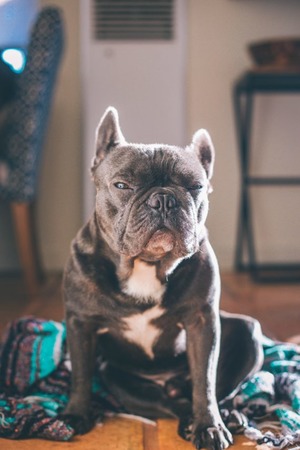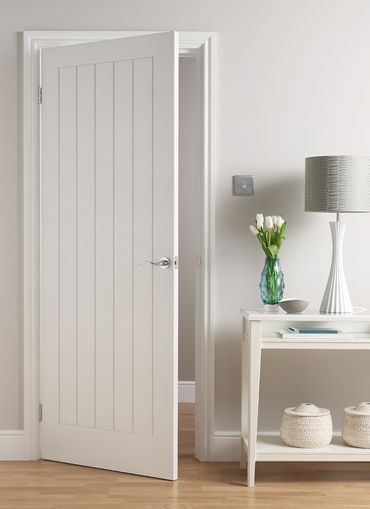Selecting the correct sheen level for interior painting

For those considering painting a room or two themselves, there are a number of things to bear in mind to ensure that you achieve the right finishes, and results that last. Preparation is crucial, and of course there is the all-important colour selection, but what about sheen levels?
If you’ve ever felt overwhelmed or confused (like our pup friend) whilst standing in front of shelves upon shelves of paint drums at your local paint store or Bunnings, read on for a few tips to get you started.
CEILINGS
For the majority of ceilings, you’ll want to use a flat paint. Flat paint covers blemishes in plasterboard well, including covering joins between plasterboard sheets. It is easy to apply and is a lot less likely to show any stop and start marks left when rolling, some of which would be expected from a DIY painter. Whilst flat paint isn’t as washable as paints with higher sheen levels, this isn’t of great concern as our ceilings are lot less likely to need washing.
The exception to using flat paint is in bathrooms and separate kitchens. For these areas, where condensation and moisture are more likely (from showers, range-hoods etc), it is best to use a specific kitchen and bathroom ceiling paint. Kitchen and bathroom ceiling paints have a slightly higher sheen level, making them more washable and less likely to grow mould. This said, for kitchens that are part of an open plan area where the ceiling is continuous into other spaces, regular flat ceiling paint should suffice, as the openness of the space itself provides ventilation and air flow.
WALLS
Low sheen is generally your go to paint for walls, whether they’re plasterboard or VJ boards. The added touch of sheen compared to flat paints does mean that stop and start marks or imperfections are a little more noticeable, so you do need to be consistent with your application. On a positive note, the added sheen increases the durability and washability of your walls, which is especially important for homes with children. Low sheen paint is still relatively easy to apply for a DIYer also.
DOORS, WINDOWS, ARCHITRAVES AND SKIRTINGS
For all “trims”, it’s a gloss or semi-gloss waterborne enamel paint that you’re after. Both gloss and semi-gloss paints are hard wearing and highly washable, which is ideal considering the surfaces painted in these are the most likely to be knocked and touched by grubby fingers. As for which sheen level you select, it’s really down to personal preference. Gloss provides a high sheen level, and is generally the more traditional detail paint as seen on fan lights in Queenslanders, or on picture/chair rails. Semi-gloss is slightly less luminous, and has a more modern and minimalist feel.

